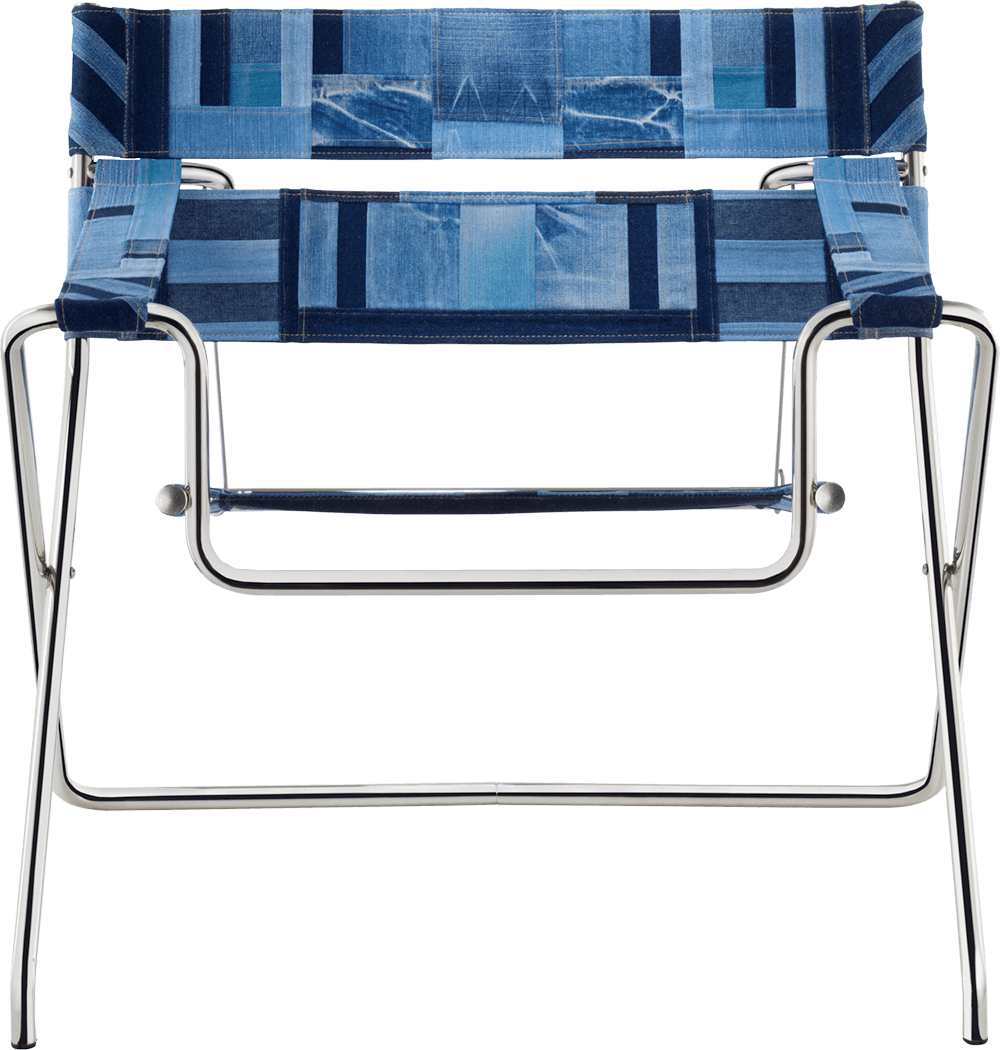
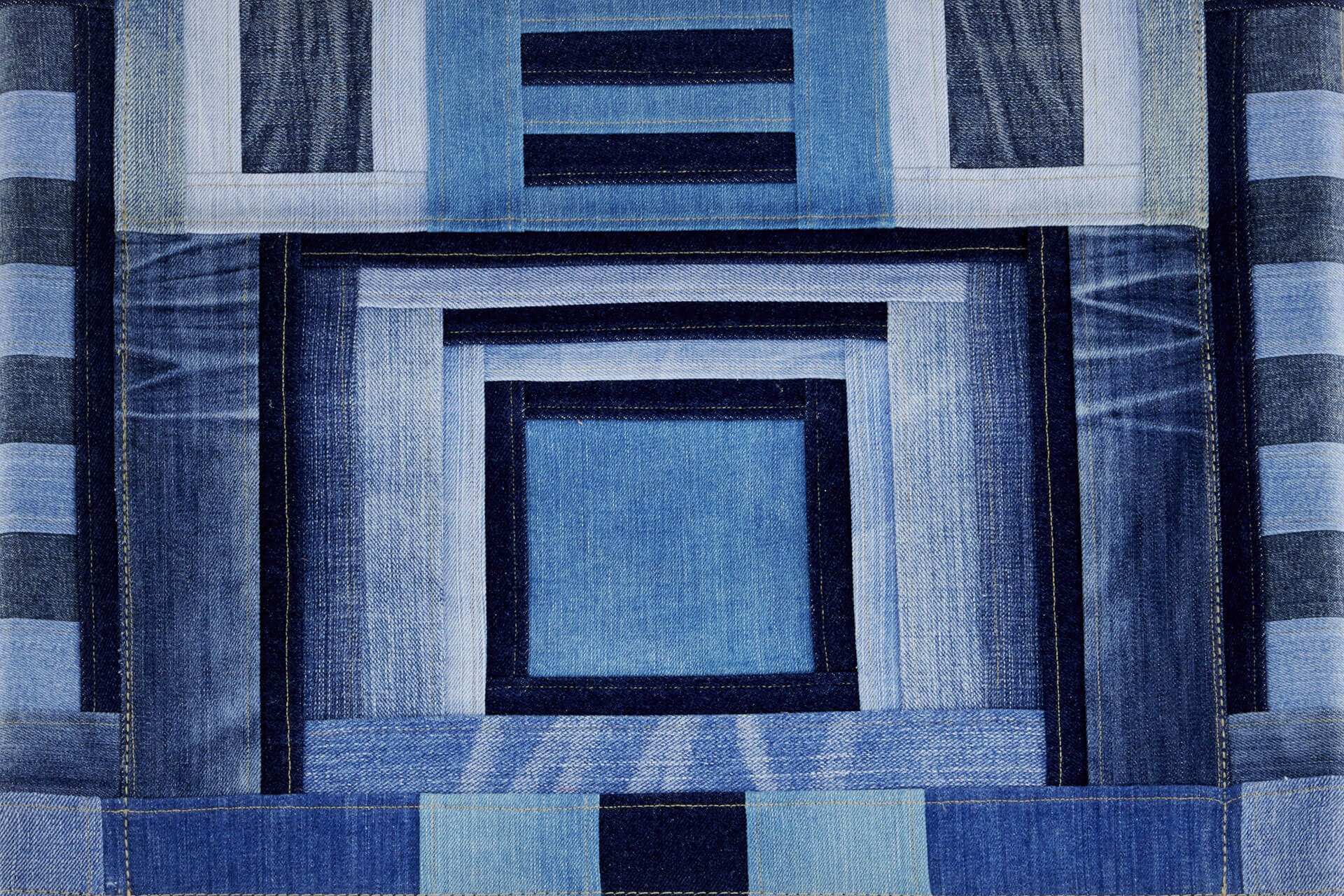
D4N
The king’s new clothes. Outfit for legends: D4 in used denim look.
An armchair to take a deep breath – and then simply let yourself be carried away in the sky blue of its legends. Breuer’s D4 club chair has been given a new outfit by artist Kerstin Bruchhäuser: The D4 in used DENIM look. Cool and sustainable – the new jeans formula for Breuer’s icon from Tecta.
+ read more
- einklappen
Few items survive fast-moving fashion trends as enduringly as jeans – for over 150 years, the trouser has been a cult. Patented by Levi Strauss in 1873, it became iconic in indigo, and for that reason alone suits Marcel Breuer’s iconic D4 from 1926/27.
Leaving out everything that is unnecessary – the collapsible tubular steel club chair was described in Breuer’s first tubular steel catalog as “particularly suitable” for terraces, summer houses, gardens and garden cafés. Modernism is tangible in it: the construction is legible, the materials perfectly matched.
A perfection that already fascinated the artist Kerstin Bruchhäuser on the occasion of the Bauhaus anniversary. Last year, she dressed the D4 in the patchwork technique of Korean pojagi, thus creating a new monument to it. Now she combines it with an outfit that weaves legends: used denim in pojagi technique. The result is a clear statement that Kerstin Bruchhäuser outlines thus: “Through the responsibly produced reinterpretation of Marcel Breuer’s classic folding chair, we show how unique sustainable design can be.”
Each of her ten unique pieces looks different – depending on the colors and washes. The light and dark blue tones tell their own stories. Whether of James Dean in the movie “… for they know not what they do” , thoughts of the blue planet, the Blauer Reiter art movement, the blue flower of Romanticism, the monochrome ultramarine blue of Yves Klein … plus greats like Elvis Presley or Marilyn Monroe in jeans.
“The possibilities of associations, color games and patterns are limitless,” says Kerstin Bruchhäuser. “Artistically, there’s always a different approach – and the connection to Marcel Breuer’s tubular steel frame looks sensationally casual.”
An armchair to take a deep breath – and then simply let yourself be carried away in the sky blue of its legends.
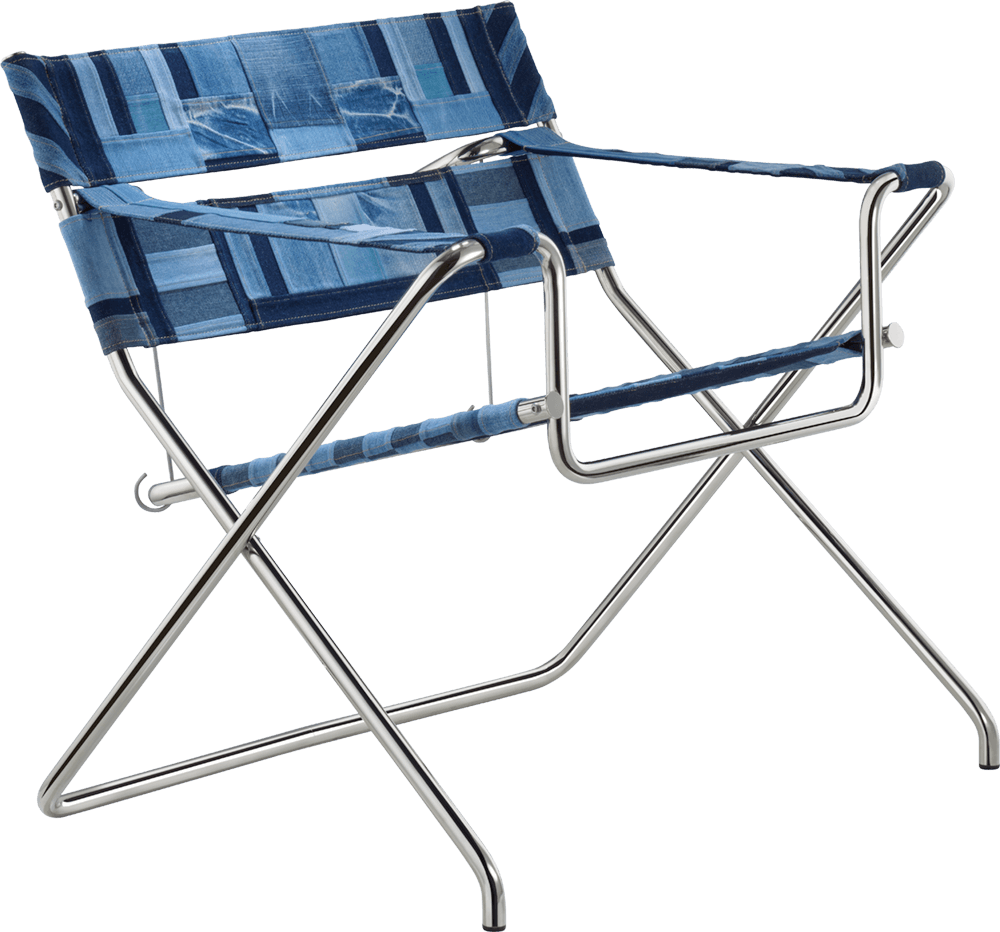
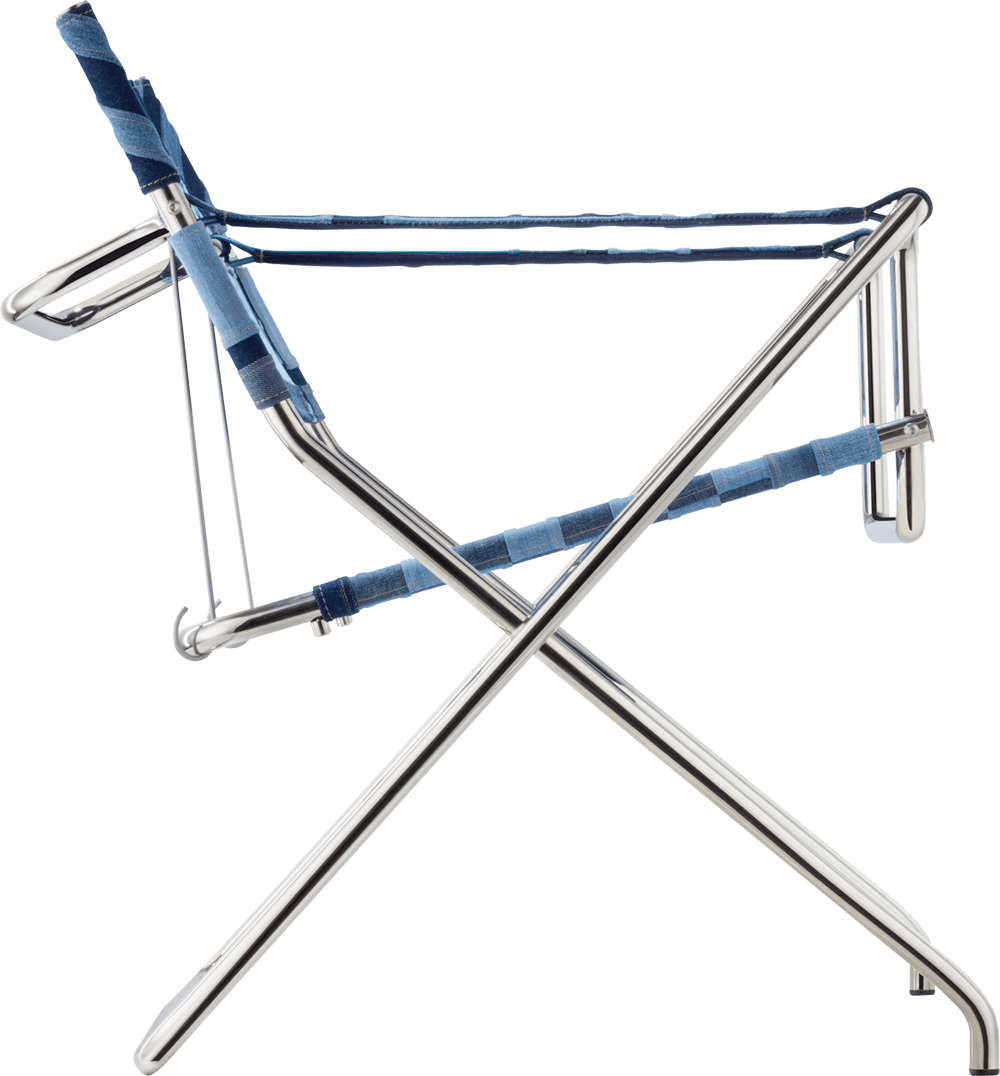

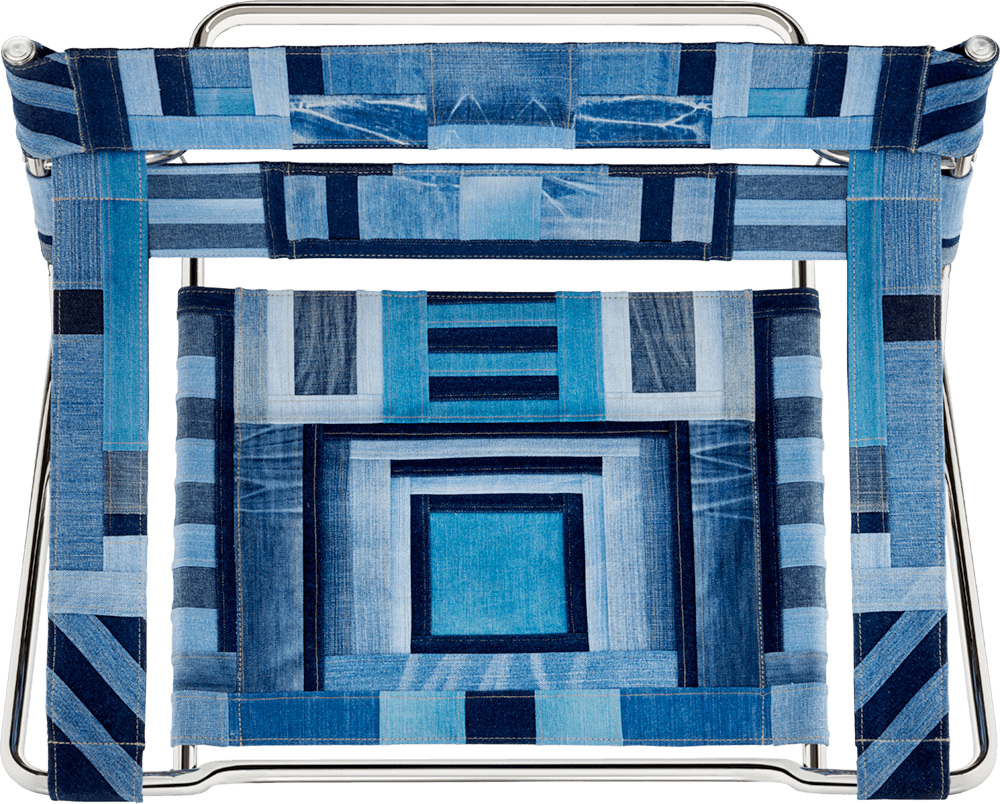
Kerstin Bruchhäuser
Kerstin Bruchhäuser, born in 1974, lives and works in Hamburg. She studied illustration and communication design at the Hamburg University of Applied Sciences from 1999 to 2005.
+ read more
- einklappen
During this time she began to create her first textile images. In 2009, she added a doctoral program in art and design at Bauhaus University Weimar, which she completed with a PhD. Her dissertation was on the topic of “Text on Used Textile in Contemporary Art.” Numerous exhibitions in Berlin, Hamburg and Weimar as well as fellowships at the Bauhaus Research School have since marked her path.
A stay in Los Angeles from 2005 to 2007 also had a great influence on her textile, artistic work, which has also met with great recognition there. In 2018, Kerstin Bruchhäuser is represented with the exhibition “The world of Frida” in Walnut Creek, California. Since 2014, the designer has also taught textile design at HAW Hamburg.
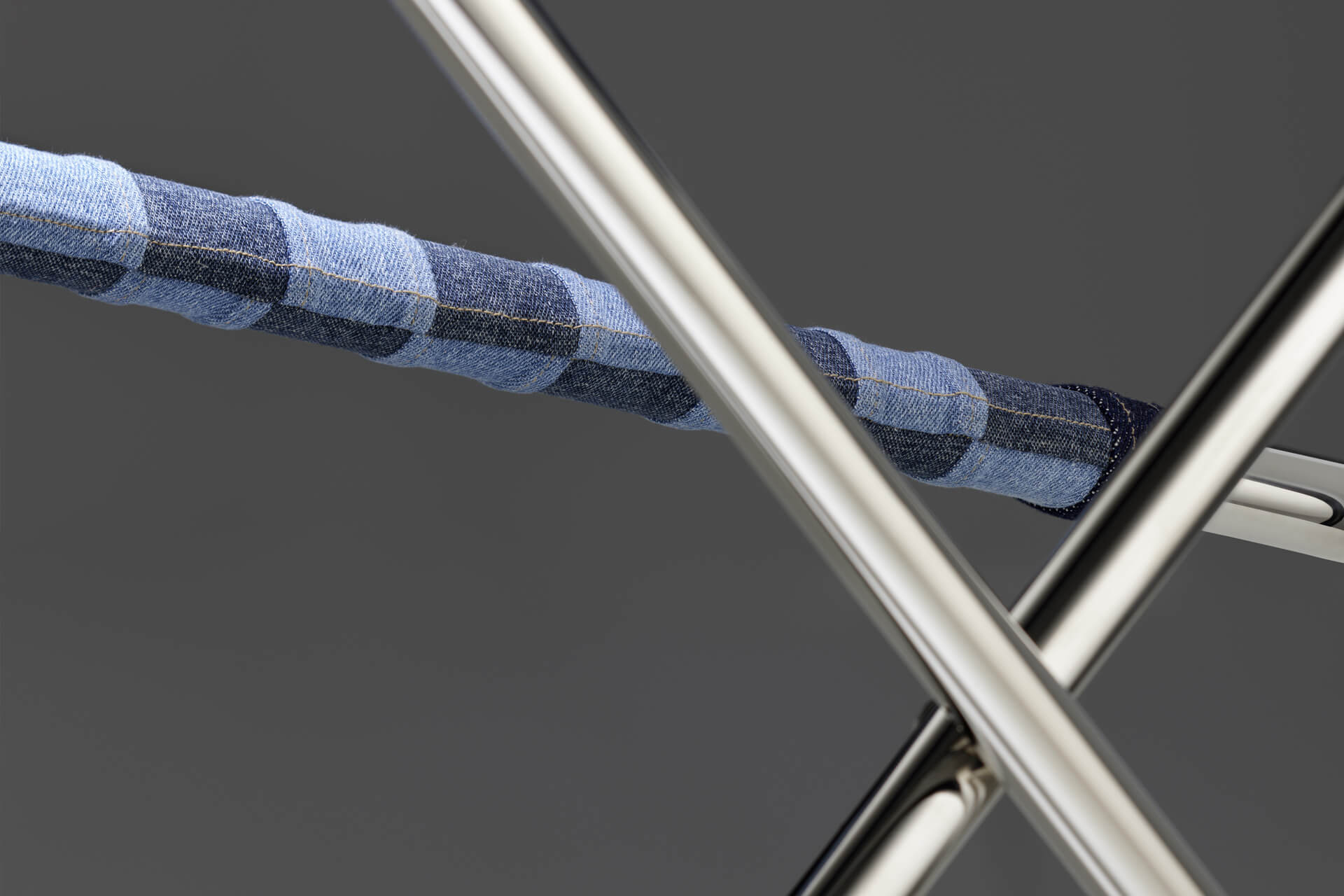
Interview Kerstin Bruchhäuser
Korean patchwork tradition meets Marcel Breuer
How did the cooperation with Tecta come about?
Kerstin Bruchhäuser: We have been in contact with Tecta for a very long time. Through a family relationship with Axel Bruchhäuser and Christian Drescher. I recently told them about the Korean Pojagi sewing technique, which I use to create large-format textile works. I sew portraits from old white linen. Christian and Daniela Drescher were very interested in this technique and visited me in my studio in Hamburg. They asked directly if I could imagine reinterpreting a Bauhaus chair with pojagi.
+ read more
- einklappen
What was the next step?
Kerstin Bruchhäuser: I chose a chair from the Bauhaus series to reinterpret: the D4 club chair by Marcel Breuer. I think the chair is cool because it’s not upholstered. You can see the front and back. That fits perfectly with the Pojagi technique.
What is special about Pojagi?
Kerstin Bruchhäuser: It’s a traditional Korean patchwork technique in which scraps of fabric are sewn together in a single layer. So the front and back sides look almost identical: The fabric pieces are joined together so that you have no open seams and no fringes. In “normal” patchwork, the back remains open – you always have to sew an additional fabric against it.
Due to the obvious seams Pojagi cloths remind of leaded glass windows, sacred. At the same time, Pojagi textiles also possess something everyday. It is a rather pragmatic use, combined with a spatial and aesthetic effect. This is because they are traditionally created from fabric scraps. So their previous life also makes the cloths very exciting and significant. Pojagi cloths are used in many ways: as privacy screens on windows or in door frames. But also as packaging to transport food. When the cloths are hung against the light, color fields are created in the room. – The aspect of sustainability plays into it in many ways – but very subtly.
Pojagi did you then simply transfer to the chair like that?
Kerstin Bruchhäuser: I discarded the first two designs when I was sewing them. The patterns didn’t fit. – Otherwise I tend to produce large-format pictures, two by three meters. That gives me more freedom of design and flexibility. If a scrap of fabric doesn’t fit in one place, you move it somewhere else, like a puzzle. But you couldn’t do that with the Breuer chair because you have very narrow places, like the armrests. I found that a lot of ideas on the seat didn’t work and the design had to be more small-scale. So on the third design, I came up with the symmetrical pattern that has now been implemented.
Were there coordination meetings during the course of the project or did you work completely freely on your design?
Kerstin Bruchhäuser: I created the pattern and selected the fabrics on my own. The seat, back and armrests were sewn by hand. A very delicate job and very time-consuming. Because the patchwork on the D4 becomes part of the chair and does not hang, the play of light naturally falls away, i.e. the effect on the room also changes. But the eye-catching seams remain. Where the fabrics are brought together, they are sometimes layered four high. This creates a multi-dimensional, relief-like seating surface.
Do you see a concrete reference to Bauhaus in your reinterpretation?
Kerstin Bruchhäuser: The Bauhaus Nowhaus project ties in with history. In my case, to the design by Marcel Breuer, which still has topicality. I take this up again through the Pojagi technique: By putting together old things, the scraps of fabric, and letting new things emerge from them. Developing something new and going back to traditional techniques is a classic Bauhaus idea.
What is it like to change a design icon?
Kerstin Bruchhäuser: It’s very ambivalent. A blessing and a curse at the same time (laughs). You have a lot of respect. Because the chair is perfect in its original form. I’ve known the D4 since I was a child. I know what Marcel Breuer was thinking.
At the same time, it is an absolute honor to be allowed to create a new approach. To have the freedom to approach this sacred piece, to be allowed to desecrate it a bit.